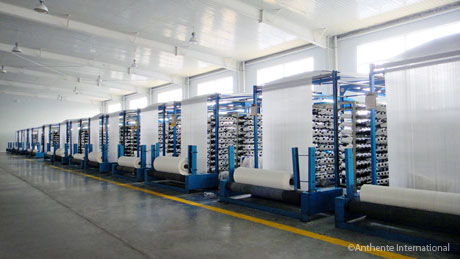Flexitank
Construction
Our Flexitanks are composed of layers of food-grade polyethylene and enveloped with an outer layer of high strength abrasion-resistant woven polypropylene. These two materials combined have an impressive carrying capacity between 14,000 and 24,000 liters (3,700 to 6,340 US gallons) of non-hazardous liquid goods, and are especially engineered to be durable for long hauls.

Flexitanks are designed for single-use and have a wide safe loading temperature. The materials used are environmentally friendly and can be recycled.
The polyethylene layers are constructed under clean room conditions and are certified for food-safe transportation. Our Flexitanks satisfy the following regulations:
- US FDA / 21 CFR177.1520
- EU 90 /128EEC
- Rail Impact Test
- Association of American Railroads
- Container Owners Association
Valve Technology
For added convenience, different valve styles can be installed and fitted on the Flexitank based on your specifications. Top or bottom loading/ unloading options may be customized to ensure that your product is handled according to your machines and trained personnel. Computer controlled heat sealing technology is used to install the valves instead of the traditional screw fastening, which improves the safety, durability, and reduces the risk of leakage in the Flexitank. Additional air vent valves may be installed, depending on the product, which releases pressure buildup inside the Flexitank.
Added Safety and Convenience
In addition to the woven polypropylene, the container interior is lined with heavy corrugated paper to prevent direct contact and friction between the Flexitank and the steel walls. A bulkhead kit consisting of horizontal steel bars is included to secure a loaded Flexitank at the open end of the shipping container.
Flexitanks may be customized with specific oxygen barrier properties for specialty products, such as wine and certain oils, to maintain product quality during long transits. Additional solutions include extra layers of fabric to protect against light and UV rays, and heating pads for highly viscous products to prevent hardening in cold weather.
